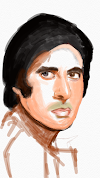The Majestic Peacock: A Symphony of Colors and Symbols
The peacock, often considered the epitome of grace and beauty, is more than just a bird—it's a symbol of elegance, pride, and wonder. With its vibrant plumage and enchanting display, the peacock has captivated the imagination of cultures worldwide for centuries. In this post, we will take a closer look at the fascinating world of the peacock, its symbolism, and why it continues to inspire awe today.

The Colors of Nature's Art
A peacock’s feathers are nothing short of a masterpiece. The iridescent blues, greens, and golds that shimmer in the sunlight are the result of microscopic structures in the feathers that bend light in the most magical ways. When a male peacock unfurls its tail—a display known as a "train"—it is not just for show. The intricate patterns and vibrant hues are a signal to potential mates, a call to the wild that says, "Here I am, the most magnificent in the land."
It’s easy to see why these birds are often associated with beauty. The peacock is a living example of how nature has perfected the art of color and form. And let’s not forget the delicate, almost regal texture of its feathers, which seem to ripple and dance as the bird moves.
A Symbol of Pride and Transformation
In many cultures, the peacock is more than just a symbol of beauty; it represents a deep connection to themes of transformation, renewal, and even immortality. In Hindu mythology, the peacock is associated with the goddess Saraswati, who embodies wisdom, knowledge, and the arts. The bird’s ability to shed and regrow its feathers has made it a symbol of regeneration and rebirth.
In Greek mythology, the peacock is linked to Hera, the queen of the gods. Her chariot was said to be drawn by peacocks, and their eye-like patterns on the feathers were believed to represent the watchful eyes of the goddess. The bird’s majestic display, with its fan-like feathers spread wide, is often seen as a reflection of pride and dignity.
Nature’s Performance: The Peacock’s Dance
When the male peacock opens its tail, it isn’t merely an aesthetic display—it’s a performance. The bird slowly turns and moves in a rhythmic pattern, showcasing its feathers in a full-blown courtship dance. This dance is a fascinating demonstration of the peacock's strength and health. The larger and more vibrant the train, the more attractive the peacock becomes to potential mates, a testament to the survival of the fittest in nature's own version of a beauty contest.
Interestingly, researchers have found that the size of a peacock's tail and the eye spots on its feathers are often directly correlated with its genetic fitness. So, when you witness a peacock strutting its stuff, you’re not just seeing an animal flaunting its colors; you're watching a primal display of evolutionary strategy.
The Peacock in Art and Culture
From ancient sculptures to modern-day fashion, the peacock has been a frequent muse for artists throughout history. Its beauty is not only captured in paintings and jewelry but also in the world of high fashion, where designers often draw inspiration from the bird's opulent feathers. The peacock's status as a symbol of royalty and luxury has made it an enduring motif in art, literature, and design.
Final Thoughts: The Timeless Allure of the Peacock
Whether it's the way the light catches its feathers or the graceful movements of its courtship dance, the peacock’s presence is nothing short of magical. More than just a bird, it’s an emblem of nature’s beauty, mystery, and power. So, the next time you see a peacock, take a moment to appreciate not just its striking appearance but the rich symbolism it carries across different cultures and times.


















0 Comments